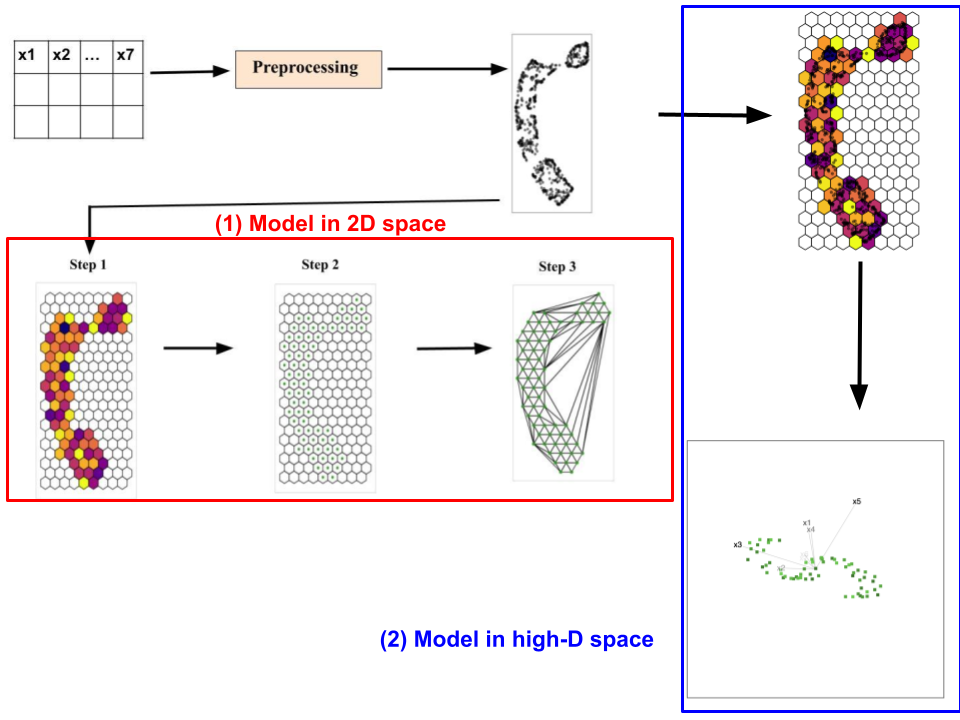
The hardware and bandwidth for this mirror is donated by METANET, the Webhosting and Full Service-Cloud Provider.
If you wish to report a bug, or if you are interested in having us mirror your free-software or open-source project, please feel free to contact us at mirror[@]metanet.ch.

Nonlinear dimension reduction (NLDR) techniques provide a
low-dimensional representation of high-dimensional data by applying a
non-linear transformation. The complexity of the transformations and
data structure can create wildly different representations depending on
the method and parameter choices. It is difficult to determine whether
any are accurate, which is best, or whether they have missed structure.
To help assess the NLDR and decide on which, if any, is best, we have
developed an algorithm to create a model that is then used to display as
a wireframe in high dimensions. The quollr package provides
functions to implement the algorithm.
For a thorough background and discussion on this work, please read our paper https://arxiv.org/abs/2506.22051.
You can install the released version of quollr from CRAN with:
install.packages("quollr") The development version from GitHub with:
install.packages("pak")
pak::pak("JayaniLakshika/quollr")Our approach involves dividing the high-dimensional data set into two parts: a training set to construct the model and a test set to generate model summaries. To implement our approach, first we use a \(2\text{-}D\) embedding data set as the initial point. The output of our algorithm is a tour that displays the model overlaid on high-dimensional data. Our algorithm comprises two main phases: (1) generate the model in the \(2\text{-}D\) space, and (2) lift the model into high-dimensional space. This methodology is available in this package.

questioning how a high-dimensional object looks in low-dimensions using r
detourr: 8.
Linked plots with detourrThis package is licensed under the MIT license.
These binaries (installable software) and packages are in development.
They may not be fully stable and should be used with caution. We make no claims about them.